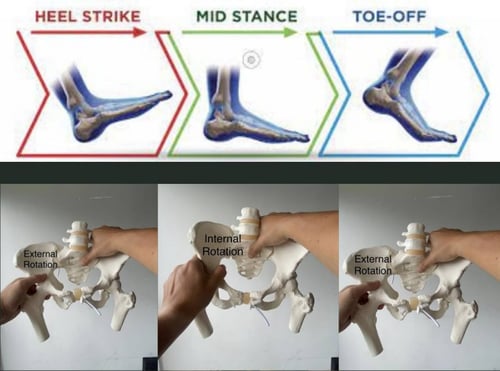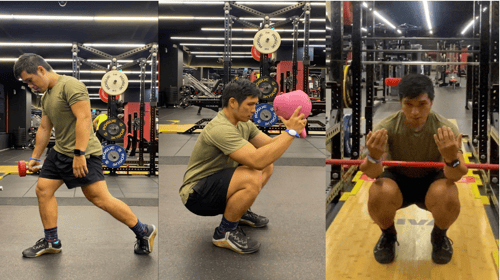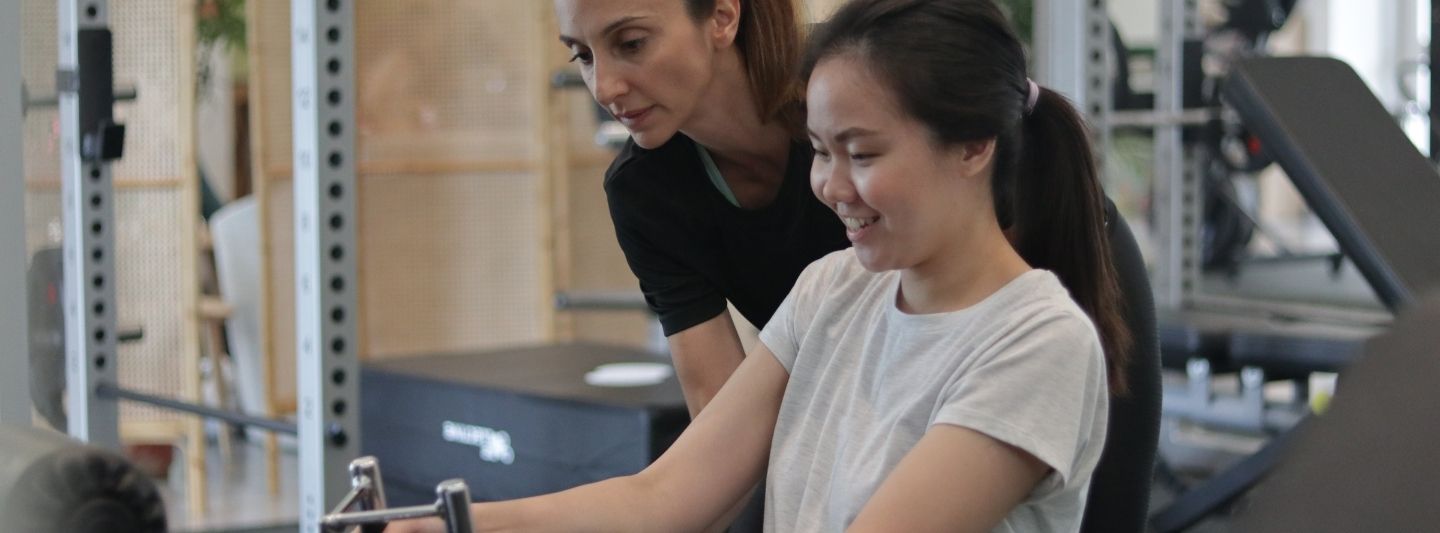Have you heard of the somatotype training model, and wondered which body type category you may fall under? Long-term professional trainer, Gary Ang, shares his personal insights and experience on how body type training can affect your fitness journey and goals.
Read on as Personal Trainer, Gary shares his fitness journey on body type training, as well as a guide on using the infrasternal angle model to find out areas in which the body is lacking, maintain better fitness, and avoid injuries.
What is Body Type Training?

Somatotype
In the traditional Somatotype training model, us, homosapiens, are placed into three categories.
The first is ectomorph, where a person can be described as thin, narrow shouldered and small boned; think of your typical long distance runner type bodies.
The second is mesomorph, individuals who are more muscular, have less body fat, and a medium bone structure. They are the ones who have a typical V-tapered body type.
The last one is endomorph, where a person has higher body fat, thought to have bigger bones (I’m sure you have heard of people saying they are big boned), slower metabolism, and typically find it hard to lose weight.
Throughout my fitness journey, I have managed to experience all three somatotypes. I started off as a skinny person who did primarily cardio exercises, looking more like an ectomorph. The second phase was when I transitioned to weight lifting and consumed more calories without really watching my diet so my body got to a high body fat percentage and I looked like an endomorph.

Endomorph body image
“Was doing consistent weight training but failed to watch my diet. Body fat was hovering around 22%.”
The last phase was when I decided to chase the “6 pack abs” dream and started watching my diet. I took note of the Macronutrients (Carbohydrates, Fats and Protein) I consumed in addition to following a good weight training programme. That's when I got my body fat down low, kept my muscle gains, and started looking like a mesomorph.

Mesomorph body image
“Consistent weight training and watching my macronutrients intake. Body fat was at an all time low of 10%.”
If I can transition in and out of these body types then this isn’t a very reliable model isn’t it? Any good trainer that’s worth their salt will tell you that the somatotype model isn’t a good one to follow.
A major reason why most people start exercising is primarily to look good and feel good. When I was this lean, I may have looked strong on the outside, but I wasn’t pain free. There were little aches and pains everyday. My wrist would hurt or my lower back would ache, and my knees would sometimes hurt when I'm going up or down stairs. The most serious injury I had was a slipped disc and that put me out for 6 months straight. All the gains I made went out the window and it was difficult to restart.
So what works? If you want to train to look good and feel good for the long term, the infrasternal angle model by Bill Hartman is what I would recommend.
What is the Infrasternal Angle (ISA) model?
The infrasternal angle (ISA) refers to this angle at your lower rib cage (see Figure 4 in red). An angle of more than 110 degrees would mean that you have a wide ISA, and anything less than 100 degrees would indicate that you have a narrow ISA. The infrasternal angle is a representation of the body’s respiratory strategy and has a direct relationship with the pelvis.

Infrasternal Angle
The infra pubic angle is the angle at which the two big pelvic bones called the pelvic innominates meet. This infra pubic angle is exactly the same as the infrasternal angle, therefore, we can use the infrasternal angle to determine the infrapubic angle which tells us what pelvis orientation the individual is presenting with.

Infrapubic Angle

Wide ISA Wide IPA
An individual with a wide ISA would have a pelvis in internal rotation which orients everything in more internally rotated positions.

Narrow ISA Narrow IPA
An individual with a narrow ISA would have a pelvis which is in external rotation and everything would be in a more externally rotated angle.
All of us will belong to one of these two categories. This is called the base compensation layer which the body uses. Using myself as an example, I have a wide ISA, so my joints start out in a more internally rotated position. Therefore the goal for me is to use activities that can help me get some external rotation back because the joints in our body all have to go through the propulsion arc where joints move from external rotation to internal rotation and then back external rotation again.

Phases of Gait
One example of this would be the pelvis movement as we move through the human gait cycle. During the first phase of gait, heel strike, the pelvis has to be in external rotation to absorb force as the foot strikes the ground. The middle phase is the stance phase when the pelvis internally rotates to stabilise the body. The last phase is the toe off, in which the pelvis has to externally rotate again to put force into the ground to propel us forward.

Squat and Deadlift Progression
In order for me to get more external rotation measures, the activities I suggest would be Barbell Zercher squats and to regress this we can start off with a goblet squat or maybe even a split squat variation.
As for individuals with a narrow ISA, they would need to find the internal rotation and select more hinging activities. I would recommend starting with single leg deadlift variations then progressing into a staggered stance dumbbell deadlift and finally a traditional barbell deadlift.
Final Takeaways
Ultimately, using the infrasternal angle model as a guide, we can find out areas in which the body is lacking, maintain better overall fitness and avoid injuries.
Having been a trainer for 13 years, I’ve come to realise that commitment and progression in exercise regimes and a good diet is key to produce the best results an individual is looking for. Injuries can often derail a person’s fitness progress, so I can’t stress enough how important exercise selection is.




